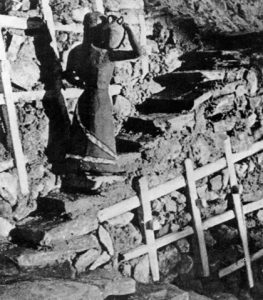Greece, Athens
Waterworks in Acropolis Hill
The water works in Ancient Athens – Acropolis Hill

Hydria Virtual Museum
Relevance
The area of Athens was first inhabited at the end of the Neolithic period, some time between 3500 and 3200 BC. The few remains and finds of this period testify that the first settlements were on, or very close to the rocky hill, which was later named Acropolis.
Of course water was the vital prerequisite for selecting the specific site on which to establish the settlement and it was accessed by digging wells. It is estimated that in prehistoric times there existed 21 wells 3 – 4 m deep, evidence of the rich water table. Later on, in the historic period, several luxury fountains were built around the Acropolis hill, exploiting these underground streams that provided access to a safe water resource in times of siege, when the Athenians would gather behind the walls of the Acropolis.
In this case study the following springs and fountains of the Acropolis are explored:
The spring and fountain house known as the Klepsydra and mentioned by many writers.

Hydria Virtual Museum
The Asklepieion spring house, which combines a spring and fountain at the healing house of Asklepios.

Hydria Virtual Museum
The Mycenaean spring fountain, which is linked to a heroic moment in Modern Greek History, when during the Nazi occupation (1941) two Greek students used this cave as a secret passageway to reach the upper level of the Acropolis and take down the Nazi flag.

Hydria Virtual Museum

